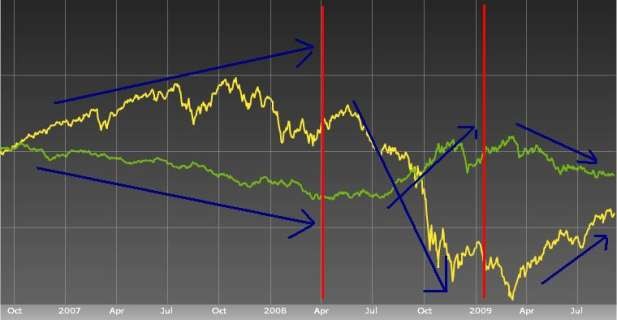2 Main Factors That Drive the
Post on: 16 Март, 2015 No Comment

Posted 2 years ago | 6:13 AM | 16 March 2013 No Comments
While most major currencies often groove to the tune of country-specific fundamentals, the U.S. dollar can be a little more fickle as it sometimes marches to a different beat. Here are the 2 main factors that usually drive the U.S. dollar:
1. U.S. Economic Performance
Just like any other currency, the U.S. dollar can be driven by fundamentals and interest rate expectations.
As discussed in the Fundamental Analysis lesson in the School of Pipsology. a countrys economic standing affects demand for its currency. A strong economic outlook usually sparks expectations of an interest rate hike, which boosts demand for its currency. On the other hand, a weak economic outlook could be followed by loose monetary policy and low interest rates, which reduce demand for its currency.
If youve paid attention in your Economics 101 class, youd know that an increase in demand for an asset leads to an increase in its price while a drop in demand results to a decrease in price. Therefore, when fundamentals are in play, strong U.S. data boosts the U.S. dollar while weak U.S. economic figures result in a dollar selloff.
2. Risk Sentiment
Risk sentiment gauges how much traders are willing to buy riskier and higher-yielding assets. When the global economy is doing well, traders usually have a stronger appetite for risk compared to instances when weak economic performance forces them to be risk-averse.
When traders are risk-averse, they tend to move their money towards lower-yielding and safer assets. Because of its status as the primary global reserve currency, the U.S. dollar enjoys increased demand from its safe-haven status.
On the other hand, when traders are feeling hungry for risk during more stable economic times, they tend to dump their lower-risk U.S. dollar holdings in exchange for higher-yielding assets.
In a nutshell, when risk sentiment is in the drivers seat, the U.S. dollar gains when risk is off and it gets sold off when risk is on.

Which of these two factors is driving the U.S. dollar these days?
Lets take a look at the U.S. dollar index and the S&P 500 index, which is considered a gauge of U.S. economic performance.
Back in 2007 when Huck was just a shy teenage girl, the U.S. dollar was positively correlated to U.S. economic performance as the Greenback sold off when the stock index was also falling. Then, when the 2008 financial crisis wreaked havoc in the markets, the U.S. dollar broke away from this correlation and traded on risk appetite.
A few years later, towards the middle of 2012, the U.S. dollar seemed to be BFFs with fundamentals again as the currency gained when the U.S. economy showed improvements.
This behavior was particularly evident last week when the strong non-farm payrolls figure for February triggered a massive dollar rally. Earlier this week, better than expected retail sales data for the same month also boosted the U.S. dollar against its counterparts.
Bear in mind though that markets are cyclical and that the Greenback could resume trading on risk sooner or later. Do you think well see a return to risk sentiment in the coming months? Let us know what you think by voting through the poll below!














